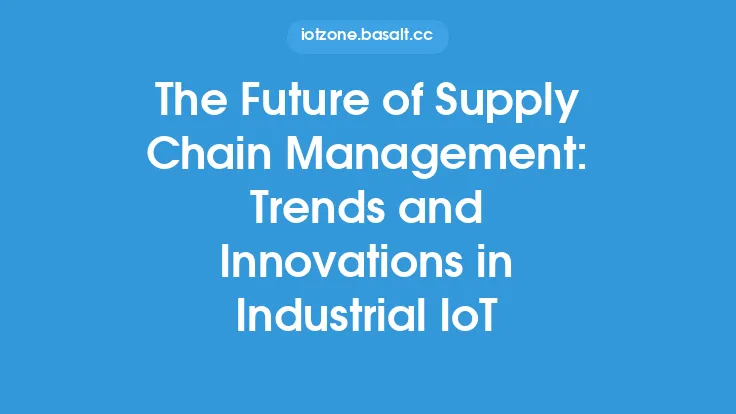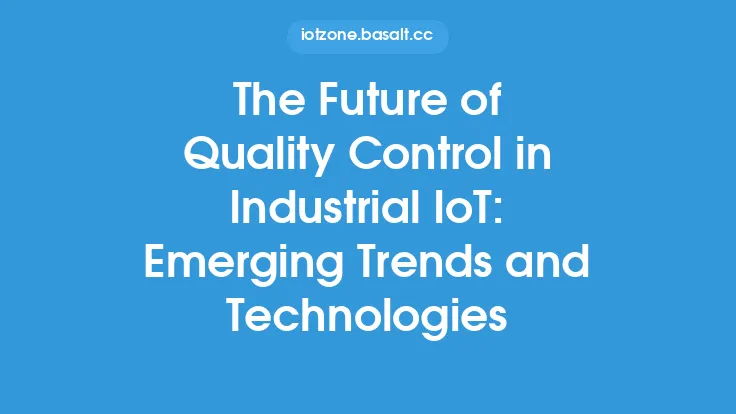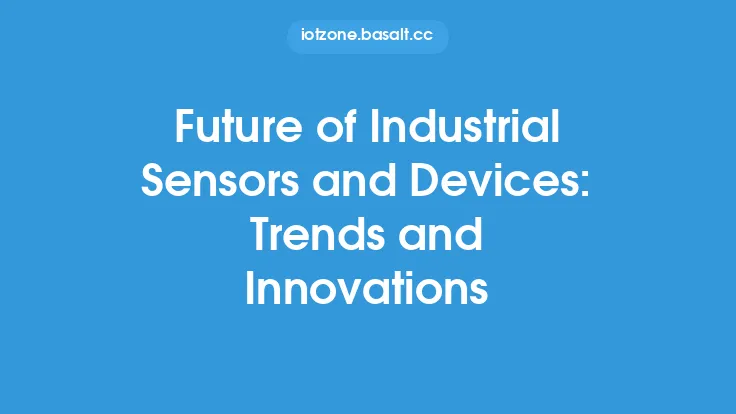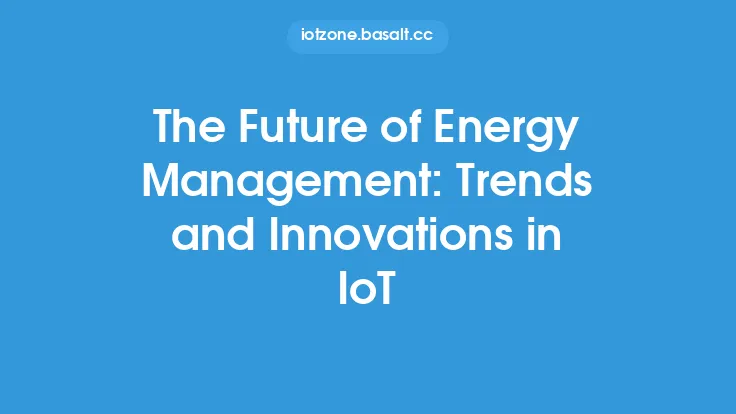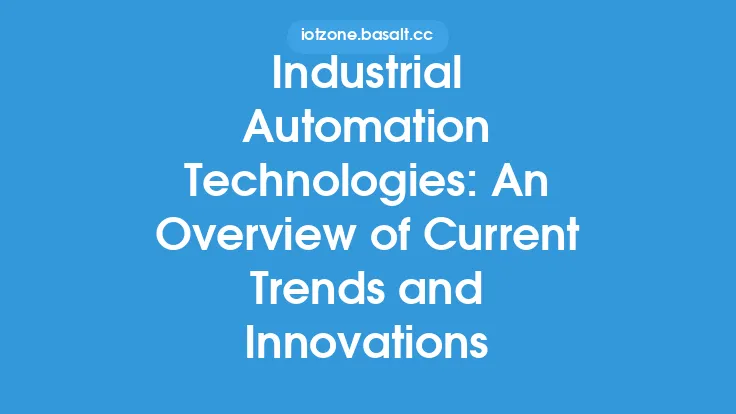The industrial sector has witnessed a significant transformation with the advent of the Industrial Internet of Things (IIoT). One of the key applications of IIoT is predictive maintenance, which has revolutionized the way industries approach equipment maintenance. Predictive maintenance uses advanced analytics and machine learning algorithms to predict when equipment is likely to fail, allowing for proactive maintenance and minimizing downtime. As the technology continues to evolve, several trends and innovations are emerging that will shape the future of predictive maintenance in industrial IoT.
Introduction to Predictive Maintenance
Predictive maintenance is a proactive approach to equipment maintenance that uses data analytics and machine learning to predict when equipment is likely to fail. This approach is different from traditional reactive maintenance, where equipment is repaired or replaced after it has failed. Predictive maintenance uses sensors and other data sources to monitor equipment performance in real-time, allowing for early detection of potential issues. By predicting when equipment is likely to fail, industries can schedule maintenance during planned downtime, reducing the impact on production and minimizing losses.
Trends in Predictive Maintenance
Several trends are emerging in predictive maintenance that will shape the future of the technology. One of the key trends is the increasing use of artificial intelligence (AI) and machine learning (ML) algorithms to analyze data from equipment sensors. These algorithms can learn patterns in equipment performance and predict when maintenance is required. Another trend is the use of cloud-based platforms to collect and analyze data from equipment sensors. Cloud-based platforms provide scalability and flexibility, allowing industries to easily integrate predictive maintenance into their existing maintenance strategies. The use of mobile devices and augmented reality (AR) is also becoming more prevalent, allowing maintenance personnel to access equipment data and perform maintenance tasks more efficiently.
Innovations in Predictive Maintenance
Several innovations are emerging in predictive maintenance that will improve the accuracy and effectiveness of the technology. One of the key innovations is the use of edge computing, which allows data to be processed and analyzed in real-time at the edge of the network. Edge computing reduces latency and improves the speed of data analysis, allowing for faster detection of potential issues. Another innovation is the use of digital twins, which are virtual replicas of physical equipment. Digital twins can be used to simulate equipment performance and predict when maintenance is required. The use of advanced sensors, such as vibration sensors and acoustic sensors, is also becoming more prevalent, providing more accurate and detailed data on equipment performance.
Advanced Analytics and Machine Learning
Advanced analytics and machine learning are critical components of predictive maintenance. Analytics software uses machine learning algorithms to analyze data from equipment sensors and predict when maintenance is required. These algorithms can learn patterns in equipment performance and detect anomalies, allowing for early detection of potential issues. Some of the key machine learning algorithms used in predictive maintenance include regression analysis, decision trees, and neural networks. Regression analysis is used to predict continuous outcomes, such as equipment temperature or vibration. Decision trees are used to predict categorical outcomes, such as whether equipment is likely to fail. Neural networks are used to predict complex outcomes, such as equipment performance over time.
Implementation of Predictive Maintenance
Implementing predictive maintenance requires a structured approach. The first step is to identify the equipment to be monitored and the data sources to be used. This includes selecting the sensors and data collection systems to be used. The next step is to collect and integrate the data, which includes storing and processing the data in a cloud-based platform or other data management system. The third step is to analyze the data, which includes using advanced analytics and machine learning algorithms to predict when maintenance is required. The final step is to take action, which includes scheduling maintenance and performing repairs.
Benefits of Predictive Maintenance
The benefits of predictive maintenance are numerous. One of the key benefits is reduced downtime, which can result in significant cost savings. Predictive maintenance also improves equipment reliability, reducing the likelihood of unexpected failures. Another benefit is improved maintenance efficiency, as maintenance personnel can focus on proactive maintenance rather than reactive repairs. Predictive maintenance also provides real-time visibility into equipment performance, allowing industries to optimize production and reduce energy consumption.
Challenges and Limitations
Despite the benefits of predictive maintenance, there are several challenges and limitations to its adoption. One of the key challenges is the complexity of the technology, which requires significant expertise in data analytics and machine learning. Another challenge is the cost of implementation, which can be significant, particularly for small and medium-sized enterprises. The quality of the data is also a challenge, as predictive maintenance requires high-quality data to be effective. Finally, there is a lack of standardization in predictive maintenance, which can make it difficult to integrate with existing maintenance systems.
Future of Predictive Maintenance
The future of predictive maintenance is exciting, with several emerging trends and innovations that will shape the technology. One of the key trends is the increasing use of autonomous systems, which can perform maintenance tasks without human intervention. Another trend is the use of blockchain, which can provide a secure and transparent way to collect and analyze data. The use of 5G networks is also becoming more prevalent, providing faster and more reliable data transmission. Finally, there is a growing focus on sustainability, with predictive maintenance being used to reduce energy consumption and minimize waste.
Conclusion
Predictive maintenance is a critical component of industrial IoT, providing a proactive approach to equipment maintenance that can reduce downtime, improve equipment reliability, and minimize losses. As the technology continues to evolve, several trends and innovations are emerging that will shape the future of predictive maintenance. From the increasing use of AI and ML algorithms to the use of edge computing and digital twins, the future of predictive maintenance is exciting. By understanding the trends, innovations, and benefits of predictive maintenance, industries can improve their maintenance strategies and stay competitive in a rapidly changing world.
